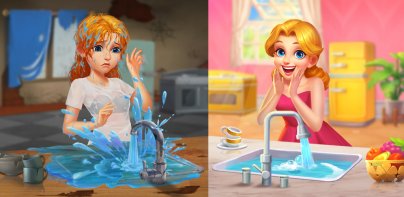


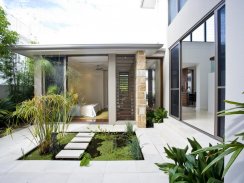
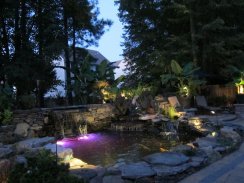
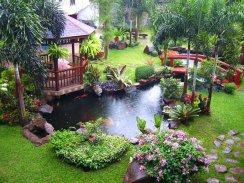
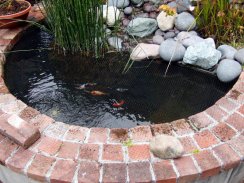
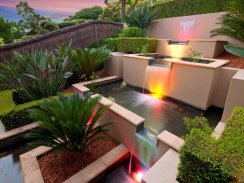
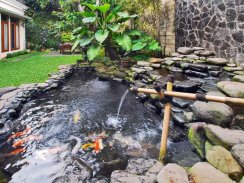
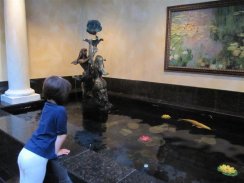
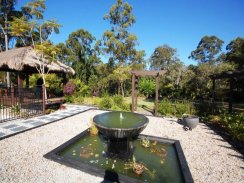
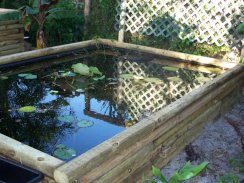


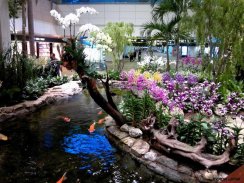

Fish Pond Design

وصف لـFish Pond Design
A garden pond can transform the atmosphere of a garden, adding colour, light and movement. If you include a pond pump [link] then you can enjoy the soothing sound of moving water too. In a small garden an area of open water can actually increase the sense of space. In my Hampshire garden I have three ponds – one large and two small – and each of them has a different character. Birds love them, and their reflective surfaces fill the garden with light on the dullest day.
There are several different styles of garden pond; which you choose and how you stock the pond will depend on the style of your garden and the space you have available. Square, circular and rectangular ponds are ideal for formal gardens, while irregular-shaped ponds, such as the popular kidney-shape, look best in less formal settings. Any pond will attract visiting wildlife, but if you design and construct it with their needs in mind you can create a perfect home for frogs, insects, birds and many other wild creatures.
Siting a pond
It is essential that a pond is sited correctly from the start; it is very difficult to put things right later on. A poorly sited pond will also require more maintenance to keep it looking good. Choose an open, sunny site that is not exposed to the prevailing wind. Avoid areas that are in deep shade or near overhanging deciduous trees. If you are sinking the pond into the ground, make sure the site you choose is free from underground obstacles, such as drainpipes and cables. It will make your pond become better. As we know that, fish pond can be combined with the design of your house. Home design will be good if the fish pond is very clean.The combination planter near the fish pond will make your japanese garden, flower garden, water fountain become more interesting and beautiful. And then, Your home exterior design will be good too, so you should choose the best step or way to make or design your fish pond.
What size pond?
In general, the larger the pond the easier it will be to look after, provided it has been sited in the right place. If you want a traditional feature, filled with aquatic plants and fish, a pond with a surface area of around 5m² (that's about 7x8ft in old money) will be large enough to be self-sustaining. The deepest area should be about 60cm (2ft), with 15-cm (6-in) deep shelves running along the edges where shallow-water marginal plants can be grown. It is important to have deep-water areas in a pond to prevent rapid fluctuations in water temperature that can put fish under stress.
Edging your pond
A pond needs a neat and practical edging to make it an attractive feature. You can edge a pond in a range of different materials; which one you choose will depend on the style of pond you are trying to create. Formal ponds These require a formal edging. This is easiest to achieve using paving slabs bedded on mortar, trapping the edge of the liner underneath. For best effect, make sure the paving overhangs the edge of the pond by about 5cm (2in) to help hide the liner from view. Informal ponds Irregularly shaped pools look best using paving of different sizes or bricks that can be laid on edge to follow the sweep of the curve. In my garden I have used pebbles and cobbles which run down into the water and can be left loose. If you use paving slabs or bricks you will have to bed the edging material on mortar, trapping the edge of the liner underneath. If you want a more natural look, at least part of the pond can be edged as described for wildlife ponds, below.














